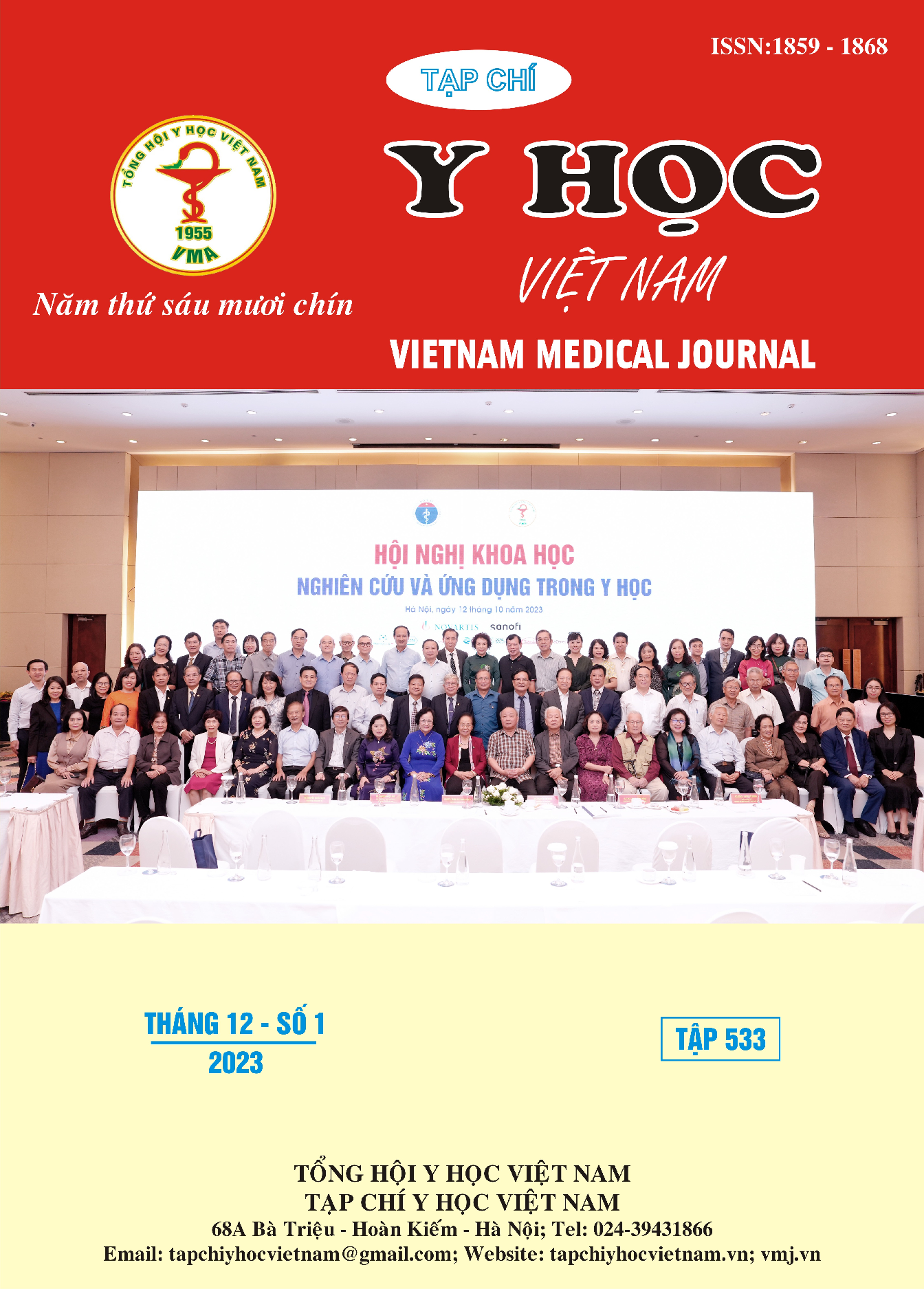ASSESSMENT OF PLASMA PARATHYROID HORMONE CONCENTRATION AND ITS ASSOCIATION WITH KIDNEY TRANSPLANT RECIPIENT FACTORS: A CROSS-SECTIONAL STUDY
Main Article Content
Abstract
Background: Secondary hyperparathyroidism is a common complication observed in chronic kidney disease (CKD) patients that persists even after kidney transplantation. This condition can lead to mineral bone disease, impact kidney graft function, and is linked to cardiovascular risks post-transplantation. Objectives: This study aimed to investigate plasma parathyroid hormone (PTH) concentrations in kidney transplant recipients and examine their relationship with recipient factors. Subjects and Methods: This cross-sectional study involved kidney transplant recipients observed at the People's Hospital 115 from August 2020 to August 2021. Data on plasma parathyroid hormone levels and patient characteristics were gathered during this period. Results: Among the 234 studied patients, mean age were 49.51 ± 11.68 years, 172 (73.5%) were male. The mean estimated glomerular filtration rate (eGFR) was 70.05 ± 16.29 ml/min/1,73 m2. CKD staging showed 10.3% at stage 1T, 67.1% at stage 2T, 21.4% at stage 3T, and 3.1% at stage 4T; no patients were at stage 5T. The mean dialysis duration before transplantation was 28.2 ± 26.4 months (range: 3 to 150 months). The mean time since transplantation was 54,6 ± 42,8 months (range: 3 - 216 months). The mean PTH level was 129.72 ± 84.52 pg/ml, with 82.1% of patients having hyperparathyroidism, 17.9% with normal PTH levels, and none having hypo-concentration of PTH. Within the group of patients with elevated PTH, 63% had mild elevation, 27.6% had moderate elevation, and 9.4% had severe elevation. No significant correlations were observed between plasma PTH concentration and age, sex, time since transplant, dialysis duration, or eGFR. Conclusion: 82.1% of post-transplant patients had elevated plasma PTH levels, with no correlations found between PTH concentration and age, gender, transplant or dialysis duration, or eGFR.
Article Details
References
2. Nguyễn Thị Kim Thủy, (2011), "Nồng độ Ca, P, hormon tuyến cận giáp huyết thanh và tình trạng loãng xương ở bệnh nhân suy thận mạn lọc máu chu kỳ", Tạp chí Y học Thực hành, 771 (6) pp. 25-35.
3. Nguyễn Hoàng Thanh Vân, (2015), Nghiên cứu nồng độ beta-crosslaps, hormon tuyến cận giáp huyết thanh ở bệnh nhân bệnh thận mạn giai đoạn cuối, Luận án Tiến sỹ Y học. Trường Đại học Y Dược Huế, pp. 30-35.
4. Amin T, Coates P T, Barbara J, Hakendorf P, et al, (2016), "Prevalence of Hypercalcaemia in a Renal Transplant Population: A Single Centre Study", Int J Nephrol, 2016 pp. 7126290.
5. Amin T, Coates P T, Barbara J, Hakendorf P, et al, (2016), "Prevalence of hypercalcaemia in a renal transplant population: a single centre study", International journal of nephrology, 2016 pp.
6. Botha J, Botha J, (1997), "Parathyroid function after successful renal transplantation", South African Journal of surgery Suid-afrikaanse Tydskrif vir Chirurgie, 35 (3), pp. 113-116.
7. Douthat W G, Chiurchiu C R, Massari P U, (2012), "New options for the management of hyperparathyroidism after renal transplantation", World Journal of Transplantation, 2 (3), pp. 41.
8. Ibrahim O A, Modawe G A, AbdElkarim A, (2016), "Assessment of calcium phosphorus and parathyroid hormone in sudanese patient with renal transplantation", J Med Biol Sci Res, 2 pp. 1-4.
9. Kalokola F M. Serum calcium, phosphate and parathyroid hormone levels in kidney transplant recipients: University of Nairobi, 2014.
10. Marcén R, Ponte B, Rodríguez-Mendiola N, Rodriguez A F, et al. Secondary hyperparathyroidism after kidney transplantation: a cross-sectional study. Transplantation proceedings 2009;2391-2393.


